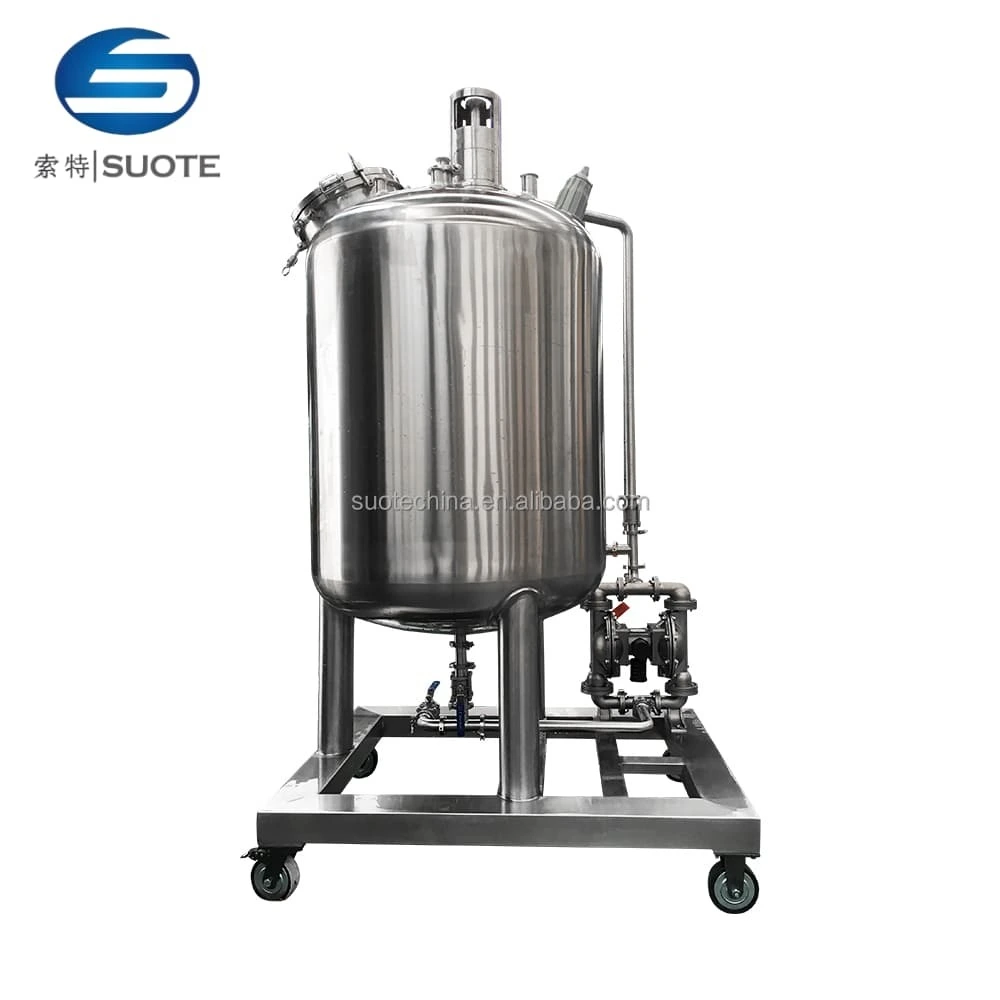Stainless Steel Homogenizer Tank Disassembled For Pharmaceutical
The homogenizing tank is mainly used for uniformly stirring chromatographic materials after blending. It has characteristics such as energy saving, corrosion resistance, strong production capacity, convenient cleaning, and simple structure. It is an indispensable equipment for pharmaceutical manufacturers.
Structural Features
◆ Equipment composition: It consists of a main homogenizing tank, pneumatic motor stirrer, pneumatic diaphragm pump, control box, distributor, movable bracket with universal wheels, valves, various functional pipe orifices, and internal connecting pipelines.
◆ Material standards: The main homogenizing tank, valves, various functional pipe orifices, and internal connecting pipelines are all made of imported SUS31 It is manufactured, inspected, and used in accordance with the pharmaceutical machinery industry standard JB/T20074-2005. It follows the specification of "Steel Pressure Vessels" GB150-1998 (not a pressure vessel) and meets GMP requirements.
◆ Tank design: The inner surface of the tank is mirror-polished, and the outer surface is matte-treated. There is a stirring paddle inside the tank. There is an electric motor stirrer on the top to drive the stirring paddle, which can be disassembled and cleaned. There is also a feed inlet and a cleaning inlet that can be connected to pipelines. There is a discharge outlet at the bottom with a discharge valve.
Homogenizer tank components
Structural description
1. Pneumatic motor agitator
2. Homogenization main tank
3. Control box
4. Liquid inlet
5. Discharge port
6. Pneumatic diaphragm pump
7. Universal wheel movable bracket
Product Features
◆ Rapid loading/unloading of homogenizing tank: The tank body adopts upper and lower butterfly heads, and the bottom discharge outlet is convenient for rapid loading and unloading.
◆ Humanized design, convenient operation: After years of efforts, the equipment is simple and convenient to operate.
◆ High service life and reliability: Pneumatic diaphragm pumps, circuits, and pneumatic components use well-known domestic and foreign brand products to ensure the service life and high reliability of the entire system.
Product parameters
product display






